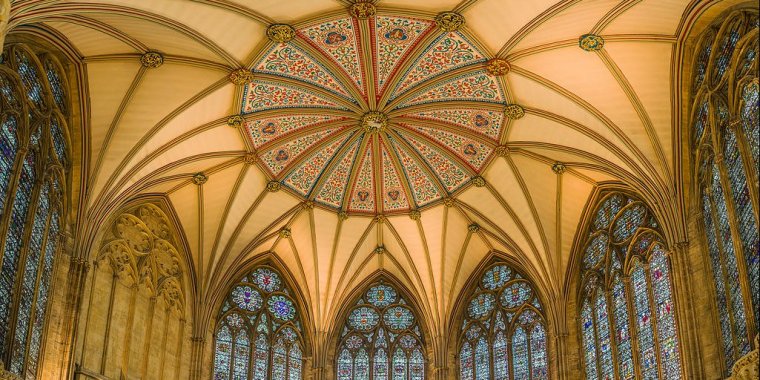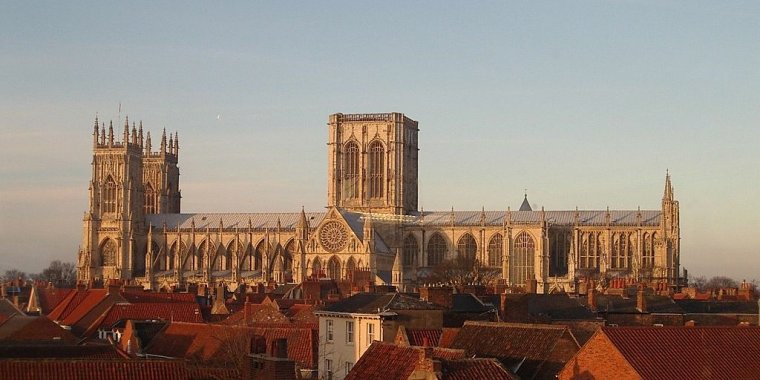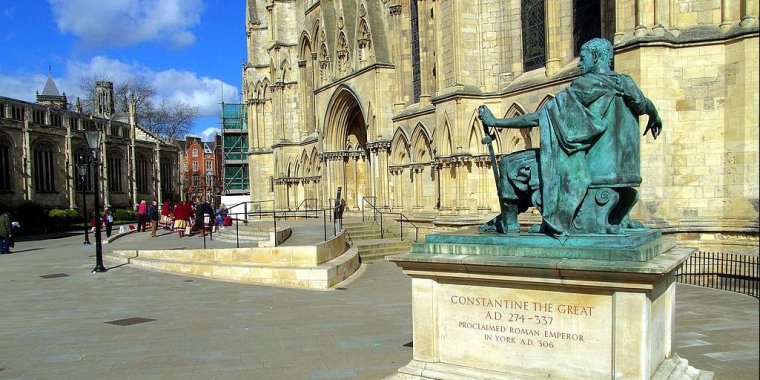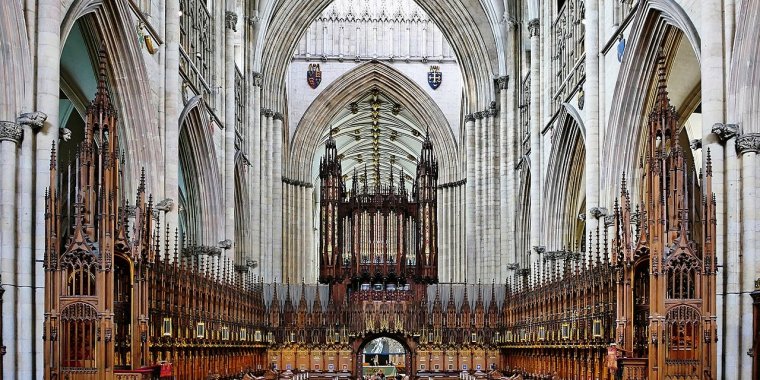| Published in Attractions / Places of Interest |
Cathedral and Metropolitical Church of Saint Peter in York, England
The Cathedral and Metropolitical Church of Saint Peter in York, commonly known as York Minster, is the cathedral of York, England, and is one of the largest of its kind in Northern Europe. The title "minster" is attributed to churches established in the Anglo-Saxon period as missionary teaching churches, and serves now as an honorific title.
The minster, devoted to Saint Peter, has a very wide Decorated Gothic nave and chapter house, a Perpendicular Gothic quire and east end and Early English North and South transepts. The nave contains the West Window, constructed in 1338, and over the Lady Chapel in the east end is the Great East Window (finished in 1408), the largest expanse of medieval stained glass in the world.
In the north transept is the Five Sisters Window, each lancet being over 53 feet (16.3 m) high. The south transept contains a rose window, while the West Window contains a heart-shaped design colloquially known as The Heart of Yorkshire.
The stone used for the building is magnesian limestone, a creamy-white coloured rock that was quarried in nearby Tadcaster. The Minster is 524.5 feet (159.9 m) long and the central tower has a height of 235 feet (72 m). The choir has an interior height of 102 feet (31 m).
The north and south transepts were the first parts of the new church to be built. They have simple lancet windows, including the Five Sisters in the north transept. These are five lancets, each 16.3 metres (53 ft) tall and five feet wide and glazed with grey (grisaille) glass, rather than narrative scenes or symbolic motifs that are usually seen in medieval stained-glass windows.
In the south transept is a rose window whose glass dates from about 1500 and commemorates the union of the royal houses of York and Lancaster. The roofs of the transepts are of wood; that of the south transept was burnt in the fire of 1984 and was replaced in the restoration work which was completed in 1988.
The nave was built between 1291 and c. 1350 and is also in the decorated Gothic style. It is the widest Gothic nave in England and has a wooden roof (painted so as to appear like stone) and the aisles have vaulted stone roofs. At its west end is the Great West Window, known as the 'Heart of Yorkshire' which features flowing tracery of the later decorated gothic period.
The two west towers of the minster hold bells, clock chimes and a concert carillon. The north-west tower contains Great Peter (216 cwt or 10.8 tons) and the six clock bells (the largest weighing just over 60 cwt or 3 tons). The south-west tower holds 14 bells (tenor 59 cwt or 3 tons) hung and rung for change ringing and 22 carillon bells (tenor 23 cwt or 1.2 tons) which are played from a baton keyboard in the ringing chamber (all together 35 bells.)
The clock bells ring every quarter of an hour during the daytime and Great Peter strikes the hour.
York Minster became the first cathedral in England to have a carillon of bells with the arrival of a further twenty-four small bells on 4 April 2008. These are added to the existing "Nelson Chime" which is chimed to announce Evensong around 5.00 pm each day, giving a carillon of 35 bells in total (three chromatic octaves).
The new bells were cast at the Loughborough Bell Foundry of John Taylor & Co, where all of the existing minster bells were cast. The new carillon is a gift to the minster. It will be the first new carillon in the British Isles for 40 years and first hand played carillon in an English cathedral. Before Evensong each evening, hymn tunes are played on a baton keyboard connected with the bells, but occasionally anything from Beethoven to the Beatles may be heard.
The fire of 1829 destroyed the organ and the basis of the present organ dates from 1832, when Elliot and Hill constructed a new instrument. This organ was reconstructed in 1859 by William Hill and Sons. The case remained intact, but the organ was mechanically new, retaining the largest pipes of the former instrument.
In 1903, J.W. Walker and Sons built a new instrument in the same case. They retained several registers from the previous instrument.
The fire of 1984 affected the organ but not irreparably; the damage hastened the time for a major restoration, which was begun in 1991 and finished two years later by Principal Pipe Organs of York.

The Chapter House ceiling and stained glass of York Minster. ![]()
The Undercroft Museum, beneath the Minster, displays centuries worth of archaeological findings in an interactive display. Then, climb the 275 steps to the top of the Minster's Central Tower to experience panoramic views from York's highest spot (ages 8+ only). The nightly Evensong worship has haunting acoustics, and is the only way of accessing the cathedral on Sunday late afternoons.
On the south side of the Minster outside, don't miss the statue of Constantine the Great, who was in 306 AD proclaimed emperor of Rome in York. At the far end of the plaza from this is a Roman column which was unearthed beneath the Minster and reerected in 1971 to mark the 1,900th anniversary of the city's founding.
Once you've seen all this, relax in the Dean's Park - a simple expanse of grass and trees that affords breathtaking views of the north side of the Minster. In spring or summer, you may catch a glimpse of nesting peregrine falcons.
Adult £11.50, senior £10.50, student with ID £9, child under 17 free. Access to Minster, museum and guided tour included; £5 extra for tower. Park and plaza free.
Deangate, YO1 7HH. Minster visits: M-Sa 9AM-4:30PM, Su 12:30PM-3PM; Museum: M-Sa 10AM-4:30PM, Su 1PM-3:15PM; Worship: Daily 7:30AM-6PM.
Sources
• www.wikivoyage.org
• www.wikipedia.org
YOU MAY ALSO LIKE






 If you own or manage a travel-related business such as a hotel, a bed-and-breakfast, a restaurant, a pub or a cafeteria, you can create a web page for your business for free on Titi Tudorancea Travel Info. » |


